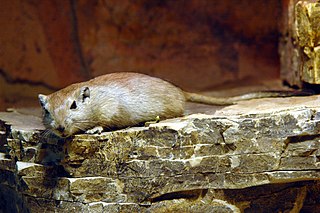
The heterotrichs are a class of ciliates. They typically have a prominent adoral zone of membranelles circling the mouth, used in locomotion and feeding, and shorter cilia on the rest of the body. Many species are highly contractile, and are typically compressed or conical in form. These include some of the largest protozoa, such as Stentor and Spirostomum, as well as many brightly pigmented forms, such as certain Blepharisma.

The stichotrichs were a proposed group of ciliates, in the class Spirotrichea. In a classification system proposed by Eugene Small and Denis Lynn in 1985, Stichotrichia formed a subclass containing four orders: Stichotrichida, Urostylida, Sporadotrichida and Plagiotomida. Although the group was made up of species traditionally classified among the "hypotrichs"--ciliates possessing compound ciliary organelles called cirri--it excluded euplotid ciliates such as Euplotes and Diophrys, which were placed in the subclass Hypotrichia. In later classifications proposed by Denis Lynn, Stichotrichia omits the order Plagiotomida.

Holotricha is an order of ciliates. The classification has fallen from use as a formal taxon, but the terms "holotrich" and "holotrichous" are still applied descriptively to organisms with cilia of uniform length distributed evenly over the surface of the body.

The painted tree-rat is a species of spiny rat from Brazil, restricted to north-eastern Bahia in eastern Brazil. It is the only species in the genus Callistomys.
The long-tailed armored tree-rat, Makalata macrura, is a spiny rat species from South America. It is found in Brazil, with a population in Ecuador which is referable either to this species or to Makalata didelphoides. Initially considered a large form of the latter species, it actually represents a distinct species as supported by morphological and molecular characters.

Monoxenous development, or monoxeny, characterizes a parasite whose development is restricted to a single host species.

Psammomys is a genus of rodents in the family Muridae.
The Peruvian tree rat is a species of rodent in the family Echimyidae. It is found in northeastern Peru and adjacent Ecuador, where it is found in the Amazon rainforest. It is nocturnal and arboreal.

The armored rat is a species of rodent in the family Echimyidae. It is monotypic within the genus Hoplomys. It is found in Latin America, from northern Honduras to northwest Ecuador. It possesses a range of spines on its back and sides of the body.

The Scolecophidia, commonly known as blind snakes or thread snakes, are an infraorder of snakes. They range in length from 10 to 100 centimetres. All are fossorial. Five families and 39 genera are recognized. The Scolecophidia infraorder is most likely paraphyletic.

Protozoa is an informal term for a group of single-celled eukaryotes, either free-living or parasitic, that feed on organic matter such as other microorganisms or organic tissues and debris. Historically, protozoans were regarded as "one-celled animals", because they often possess animal-like behaviours, such as motility and predation, and lack a cell wall, as found in plants and many algae. Although the traditional practice of grouping protozoa with animals is no longer considered valid, the term continues to be used in a loose way to describe single-celled protists that feed by heterotrophy. Some examples of protozoa are Amoeba, Paramecium, Euglena and Trypanosoma.
Karyorelictea is a class of ciliates in the subphylum Postciliodesmatophora. Most species are members of the microbenthos community, that is, microscopic organisms found in the marine interstitial habitat, though one genus, Loxodes, is found in freshwater.
Loxodes is a genus of karyorelictean ciliates, belonging to family Loxodidae. It is the only known karyorelictean ciliate that lives in freshwater habitats.

The ciliates are a group of protozoans characterized by the presence of hair-like organelles called cilia, which are identical in structure to eukaryotic flagella, but are in general shorter and present in much larger numbers, with a different undulating pattern than flagella. Cilia occur in all members of the group and are variously used in swimming, crawling, attachment, feeding, and sensation.

Loxodida is an order of karyorelict ciliates.

Loxodidae is a family of karyorelict ciliates.
Geleiidae is a family of karyorelict ciliates. It is sometimes synonymized with family Aveliidae.
Wilbertomorphidae is a family of karyorelictean ciliates. The family is monotypic, because it contains a single genus Wilbertomorpha with a single known species, Wilbertomorpha colpoda.
Geleia is a genus of karyorelict ciliates in the family Geleiidae.
Corlissina is a genus of karyorelict ciliates in the family Geleiidae. Only the type species Corlissina maricaensis is assigned to this genus.










